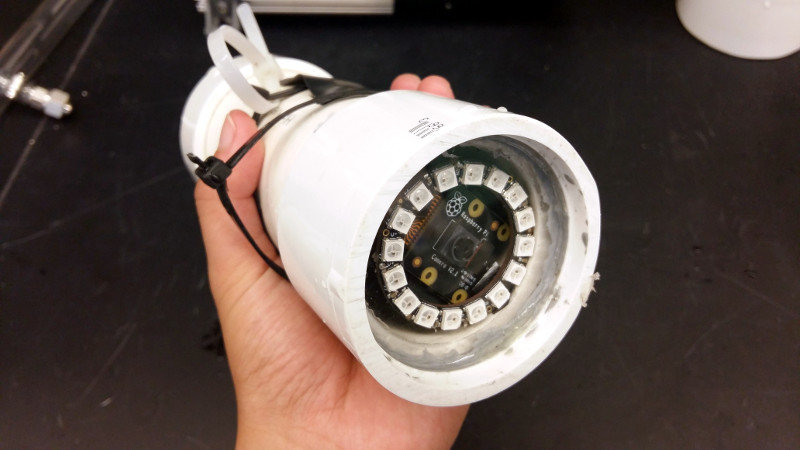We are surrounded by sensors for all forms of environmental measurement, and a casual browse through an electronics catalogue can see an experimenter tooled up with the whole array for a relatively small outlay. When the environment in question is not the still air of your bench but the turbulence, sand, grit, and mud of a sea floor, that pile of sensors becomes rather useless. [Ellie T] has been addressing this problem as part of the study of hypoxia in marine life, and part of her solution is to create an underwater camera by encasing a Raspberry Pi Zero W and camera in a sturdy enclosure made from PVC pipe. She’s called the project LoBSTAS, which stands for Low-cost Benthic Sensing Trap-Attached System.
The housing is simple enough, the PVC has a transparent acrylic disk mounted in a pipe coupler at one end, with the seal being provided at the other by an expansion plug. A neopixel ring is mounted in the clear end, with the Pi camera mounted in its centre. Meanwhile the Pi itself occupies the body of the unit, with power coming from a USB battery bank. The camera isn’t the only sensor on this build though, and Atlas Scientific oxygen sensor completes the package and is mounted in a hole drilled in the expansion plug and sealed with silicone sealant.
Underwater cameras seem to have featured more in the earlier years of Hackaday’s existence, but that’s not to say matters underwater haven’t been on the agenda. The 2017 Hackaday Prize was carried off by the Open Source Underwater Glider.
















Looks like fun, however, I’ve tried many “Underwater” cameras over the years, and my Nikon seems to be the best for me,
Quick boot to first shot, 4K video, built in flash. Next month, I’m off to dive in Southern Japan, and I need reliability, and small size. Yore mileage will vary.
Jerry – Are you going to Yonaguni?
That’s the plan.. I’m off to Haneda airport early October.
The trip was to be only 9 days, but I stretched it into two weeks..
It’s a “Photo Tour”, above and under the water..
i made something similar in pre-gopro days using a helmet cam and pvc pipe.
i used a pvc union and replaced one side of the union’s sockets with a piece of acrylic cut to the diameter of the inside of the union. a little more expensive but the ‘lens’ is replaceable.
Great project. Is that a ring of white LEDs surrounding the camera lens? In seawater you might try a US Navy idea to use Blue/Green LEDs to illuminate your subject matter under seawater. They even proved that you can use LASER light underwater for communications using B/G LASER..
Not a bad idea, but GoPro has underwater filters, a bit simpler..
filters are simpler, but it’s already a low-light environment. filtering is better done in postprocessing.
It says in writeup it’s the neopixel ring, that means RGB LEDs. Not sure if that’s better than white LEDs. If you illuminate subject with green/blue you get … green/blue image. Red light is blocked by sea water anyways. That’s why underwater photographers almost always use xenon flash to illuminate subjects, even at daylight, as there is no red down there.
I was thinking the neopixel ring was silly, but it makes a lot of sense. Not only does it let you tune the light color to cope with seawater attenuation, you can also control the individual LEDs to do depth-enhancing effects: http://web.media.mit.edu/~raskar/NprCamera/
“She’s called the project LoBSTAS, which stands for” doesn’t matter, LoBSTAS is a fine name for it lol
“Achievable things are my favorite kinds of things!” to paraphrase B. Rodriguez.